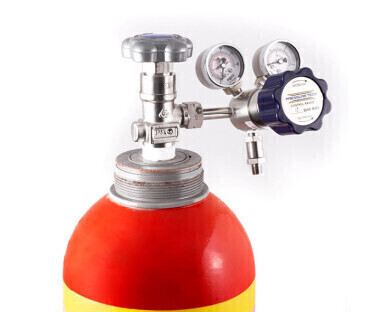Analytical instrumentation
Precision regulator enables precision calibration for speciality gas mixtures
Dec 14 2023
A significant portion of specialty gas mixture production is focused on cylinder preparation; this is a critical step that ensures the mixture’s stability. This intricate preparation is a major factor that affects the quality of the gas mixture. Any deviations from the specified label content can lead to suboptimal calibrations. Developments of cylinder and valve interaction techniques have emphasised the importance of maintaining mixture stability, taking up extensive time, testing, and research efforts.
Given the considerable investment in preparing cylinders for specific gas mixtures, it begs the question: Why do regulators and gas delivery systems not receive the same level of dedication? Material compatibility is a concept familiar to most users; it involves the careful selection of materials such as brass, plated brass, stainless steel, or special alloys to safeguard the regulator and delivery system against adverse effects. Material choice is extremely important for safety reasons as well as precise calibration.
Surfaces that lack the requisite preparation can react with gas mixtures, changing their composition. Electron microscopy imaging of widely used materials such as brass or stainless steel reveals uneven surfaces with numerous crevices where molecules can lodge. Dislodging these molecules is a challenge, contributing to the intricacy of cylinder preparation significantly.
Moisture can also pose problems because of its tendency to stick to surfaces. It reacts with commonly used reactive compounds like hydrogen sulphide, sulphur dioxide, and chlorine. With ambient air containing up to 4% moisture, exposure to such air leads to moisture contamination on exposed regulator and delivery system surfaces. Calibration mixtures containing moisture will adhere to unprepared surfaces, this also occurs with C6+ hydrocarbon compounds in their liquid phase.
Minimising contamination, reactions, and surface adhesion in gas mixtures involves strategic approaches: 1) Reducing surface area reduces the probability of adverse reactions on wetted materials. 2) Preparing wetted surfaces involves effective purging, special coatings, or a combination of both. 3) Reducing volume minimises waste, a very important consideration for high-value gas mixtures over time.
In collaboration with Pressure-Tech UK Ltd, CAC GAS has developed a specially designed regulator that addresses these critical areas. The MICRO300 Precision Regulator prioritises high-accuracy calibration, featuring fully supported 'sensitive' pistons and a low internal volume to minimise wasted gas and reactions. The regulator is available with SilcoNert® 2000 coating as an option.
CAC GAS’ range of high-precision gas control equipment, including the MICRO300 Precision Regulator, are all readily available in stock for immediate shipment.
Digital Edition
PIN 26.1 Feb/Mar 2025
March 2025
Analytical Instrumentation - Elemental Analysis for Quality and Process Control at Refineries, for Lubricants and Wear Metals in Engine Oils - Synthetic Lubricants: New Developments - Scaling...
View all digital editions
Events
Apr 14 2025 Moscow, Russia
Apr 15 2025 Moscow, Russia
Apr 22 2025 Hammamet, Tunisia
Apr 22 2025 Kintex, South Korea
Solar & Energy Storage Summit 2025
Apr 23 2025 Denver, CO, USA




.jpg)

















